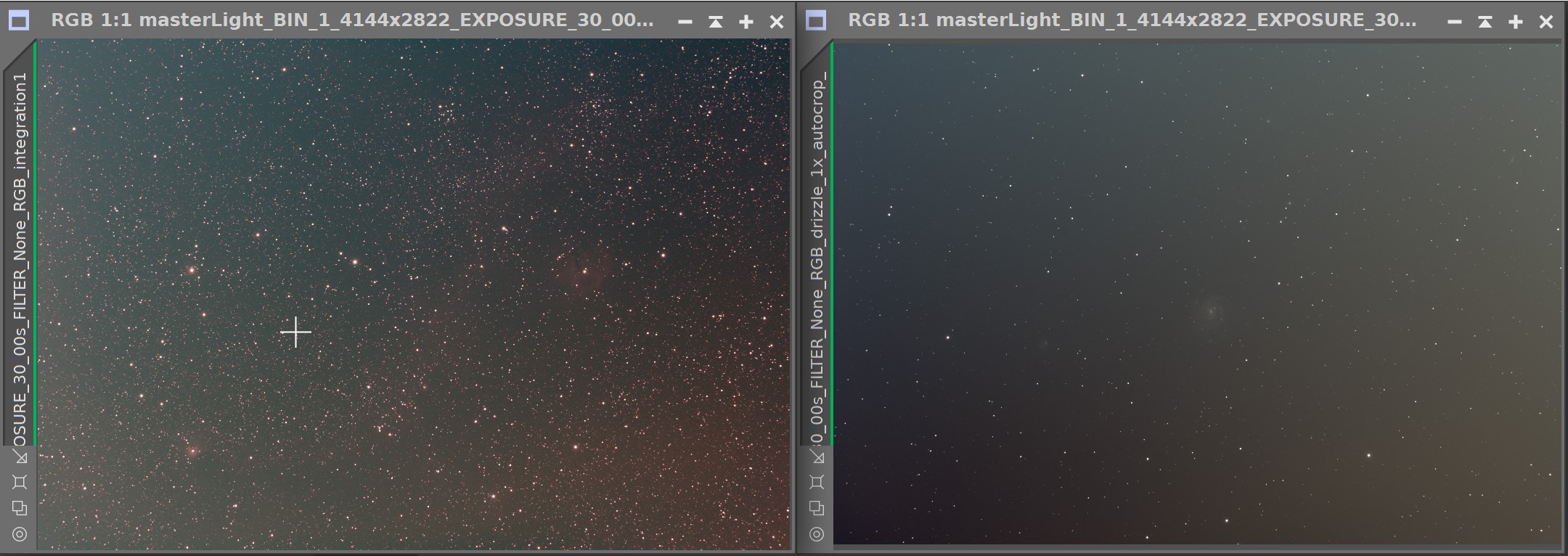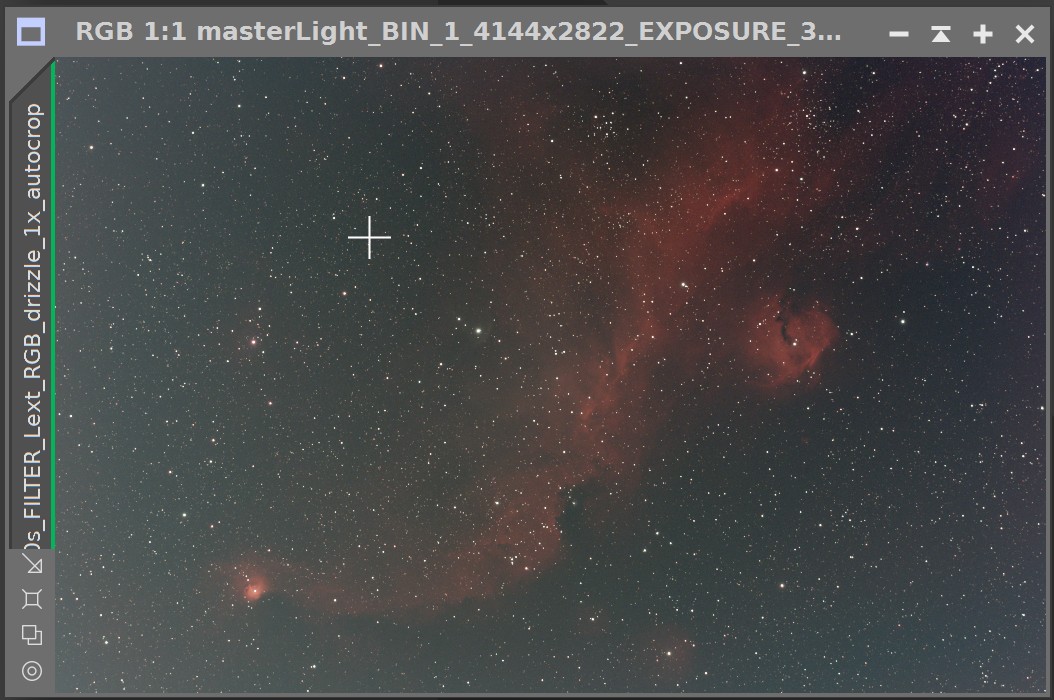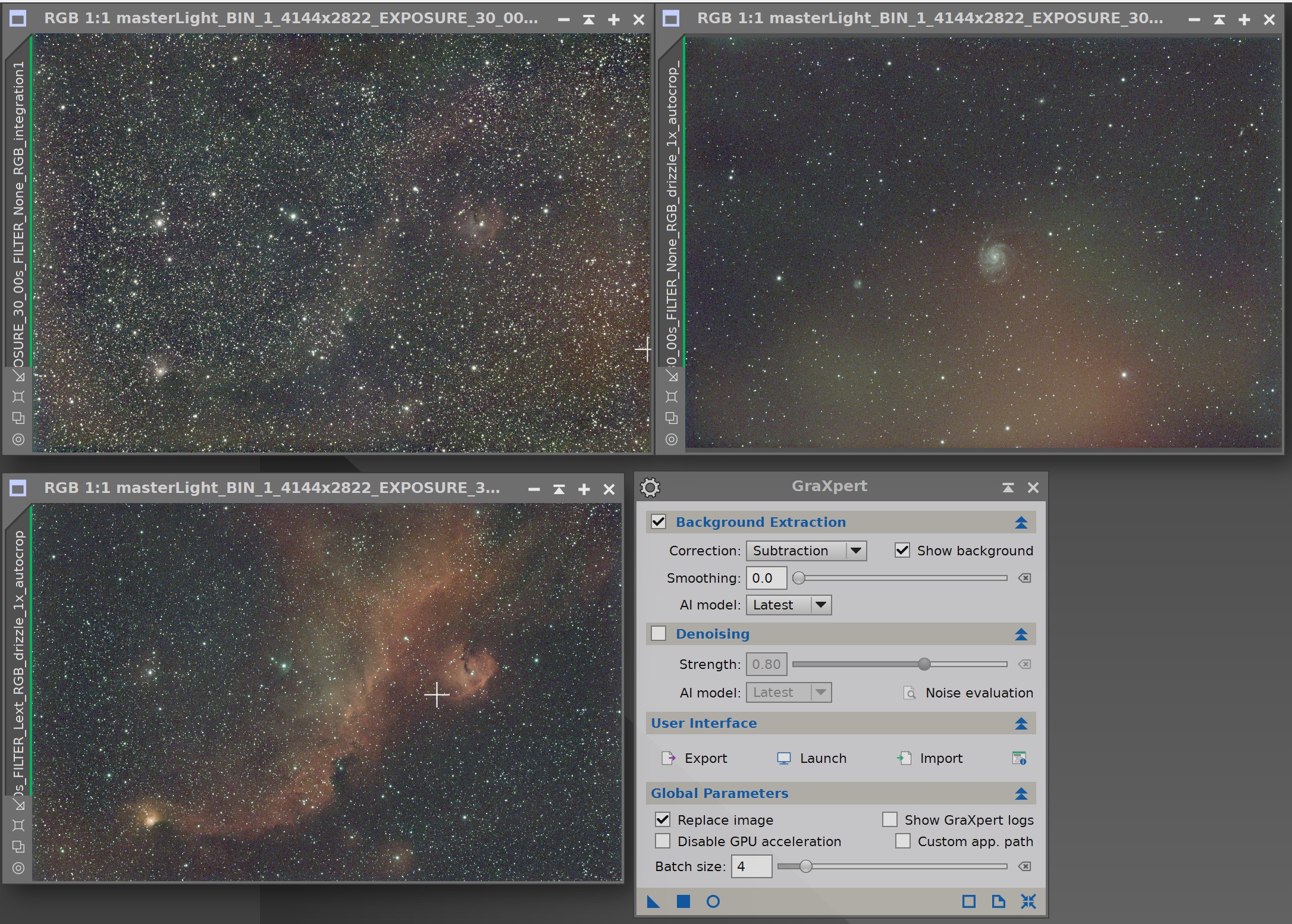Hi everyone, I’m looking to upgrade my astrophotography setup, but I’m torn between several options and would love to get your expert opinions!
PS: I dont intend to turn this into a yet-another OSC vs mono debate Just a recommendation on options, along with any anecdotes that the experts may provide
Current Setup
I live in Bortle 8-9 skies, which has limited me to narrowband imaging for bright targets like Orion, Heart, Rosette, and Horsehead Nebulae (images in my profile). My guiding performance ranges from 0.5-0.7" RMS on good nights to 0.7-0.9" on poor nights. With my current 335mm focal length, I can manage 5-minute guided exposures (passeable if not peeping into pixels, and corrected well with BlurXTerminator). However, 10-minute exposures sstart to show trails, even though some can be corrected.Broadband ExperimentsRecently, I attempted broadband imaging (2-hour integrations) with mixed results:
Given the challenges of imaging under heavy light pollution, I’m unsure whether to continue down the broadband path or stick with narrowband imaging for now.
Upgrade Options I’m Considering
Option 1: Invest in SO and broadband Filters
Option 2: Switch to a Mono Camera with filter set
Option 3: Higher Focal Length Telescope
Alternatives I am exploring:
Images for Reference (Only STF applied after WBPP)
Here are some to demonstrate what I am able to get in my skies:
Looking forward to hearing your thoughts and advice! Thanks in advance for helping me navigate this decision.


PS: I dont intend to turn this into a yet-another OSC vs mono debate Just a recommendation on options, along with any anecdotes that the experts may provide
Current Setup
- Telescope: William Optics 71GT APO with a 0.8x focal reducer
- Camera: ASI 294MC Pro OSC
- Mount: iOptron CEM40
- Accessories: Optolong L-eXtreme filter, ASI EAF, ASIAIR, 2" filter wheel, and a WO 50mm f/4 guidescope with ASI 120MM for guiding
I live in Bortle 8-9 skies, which has limited me to narrowband imaging for bright targets like Orion, Heart, Rosette, and Horsehead Nebulae (images in my profile). My guiding performance ranges from 0.5-0.7" RMS on good nights to 0.7-0.9" on poor nights. With my current 335mm focal length, I can manage 5-minute guided exposures (passeable if not peeping into pixels, and corrected well with BlurXTerminator). However, 10-minute exposures sstart to show trails, even though some can be corrected.Broadband ExperimentsRecently, I attempted broadband imaging (2-hour integrations) with mixed results:
- M101 (Pinwheel Galaxy): Some galaxy detail was visible.
- Seagull Nebula: Completely washed out compared to L-extreme; only stars visible.
Given the challenges of imaging under heavy light pollution, I’m unsure whether to continue down the broadband path or stick with narrowband imaging for now.
Upgrade Options I’m Considering
Option 1: Invest in SO and broadband Filters
- Add a dual-band SO narrowband filter for capturing SHO data.
- Add a broadband light pollution filter for galaxies and RGB star capture.
Option 2: Switch to a Mono Camera with filter set
- Upgrade to a mono camera with an RGB+SHO filter set for higher-quality imaging.
- This would significantly stretch my budget but could improve flexibility and image quality.
Option 3: Higher Focal Length Telescope
- Newtonians (f/5): GSO or Sky-Watcher 6-8" models f/5 (~750-1000mm focal length).
- Cassegrains (f/12): GSO 6-8" models (1800-2400mm focal length). Could use a reducer (~f/6) for DSOs and barlows for lunar/planetary imaging.
- While I’ve only used refractors, I’m concerned about collimation challenges with Newtonians (f/4) or Ritchey-Chrétiens.
- But what is the point of higher focal lengths if I cannot do galaxies or f/6 happens to be very slow. I currently do about f/5 (with reducer) and it occasionally seems slow to me!
- Unfortunately, RASAs and Celestron EDGEs are out of my budget.
Alternatives I am exploring:
- Broadband vs. Narrowband: Should I focus on narrowband targets under my light-polluted skies, or is broadband imaging of galaxies/planetary nebulae worth pursuing?
- Mono vs. OSC: Is switching to a mono camera worth the added complexity and cost? Do RGB filters work well as light pollution filters for broadband imaging?
- Telescope Upgrade: Is the "dual-purpose" potential of a Cassegrain (lunar/planetary + DSOs) realistic, or would a Newtonian be a better step forward for DSOs?
Images for Reference (Only STF applied after WBPP)
Here are some to demonstrate what I am able to get in my skies:
- Seagull Nebula (No filters used with OSC) - 30s subs, 1 hr integration
- Pinwheel Galaxy (No filters used with OSC) - 30s subs, 1 hr integration
- Seagull Nebula (L-extreme) - 5 min subs, 7 hr integration
Looking forward to hearing your thoughts and advice! Thanks in advance for helping me navigate this decision.


